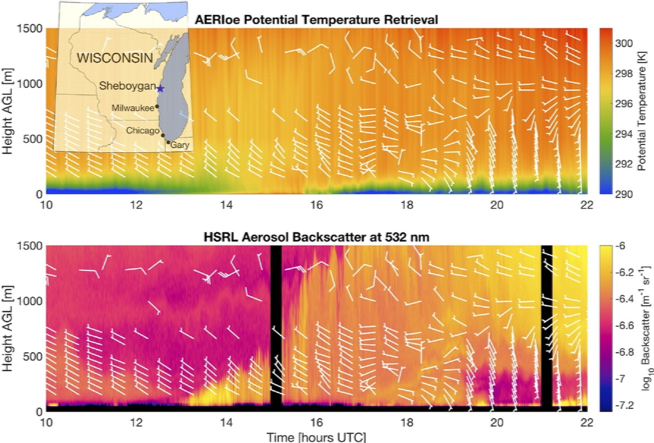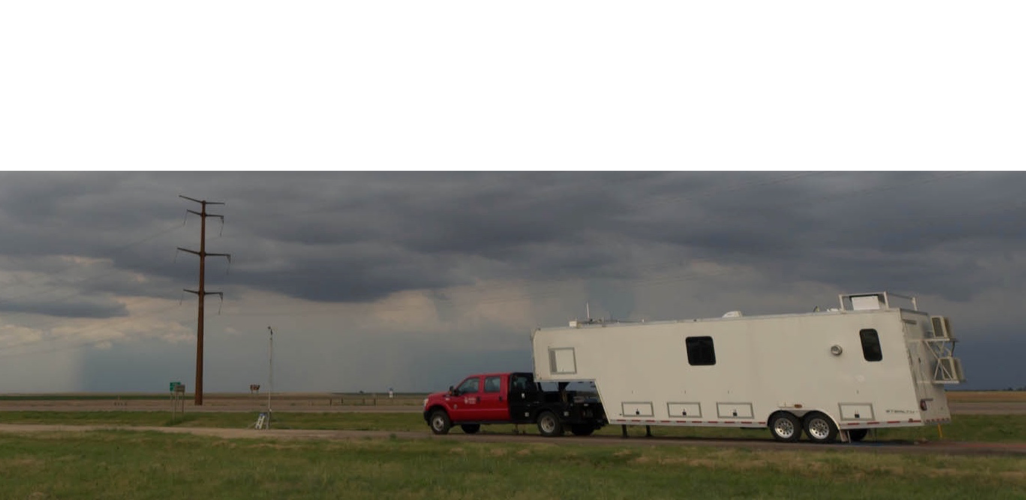

Overview
The University of Wisconsin–Madison Space Science and Engineering Center Portable Atmospheric Research Center (SPARC) is a mobile research laboratory designed for observing the atmosphere with ground-based remote sensors and in situ instruments. The SPARC is an 11-m (35-ft) towable trailer, that has been designed from the ground up to be a platform to support innovative research with state-of-the-art atmospheric instrumentation while also serving as a productive environment for researchers and technicians to work in while deployed in the field.
The suite of SPARC instrumentation includes two uniquely capable fully autonomous remote sensors both designed at SSEC: The Atmospheric Emitted Radiance Interferometer (AERI) can provide high temporal resolution profiles of temperature and water vapor in the lower troposphere; the High Spectral Resolution Lidar (HSRL) can provide detailed profiles of cloud and aerosol properties with sensitivity to the entire atmospheric column, including cirrus and stratospheric aerosols. In combination with a Doppler Lidar to provide vertical wind profiles and in situ meteorological observations, this co-located suite of instruments housed in the SPARC are ideally suited to capture the fine scale evolution of the planetary boundary layer (PBL) as well as properties of the entire atmosphere.
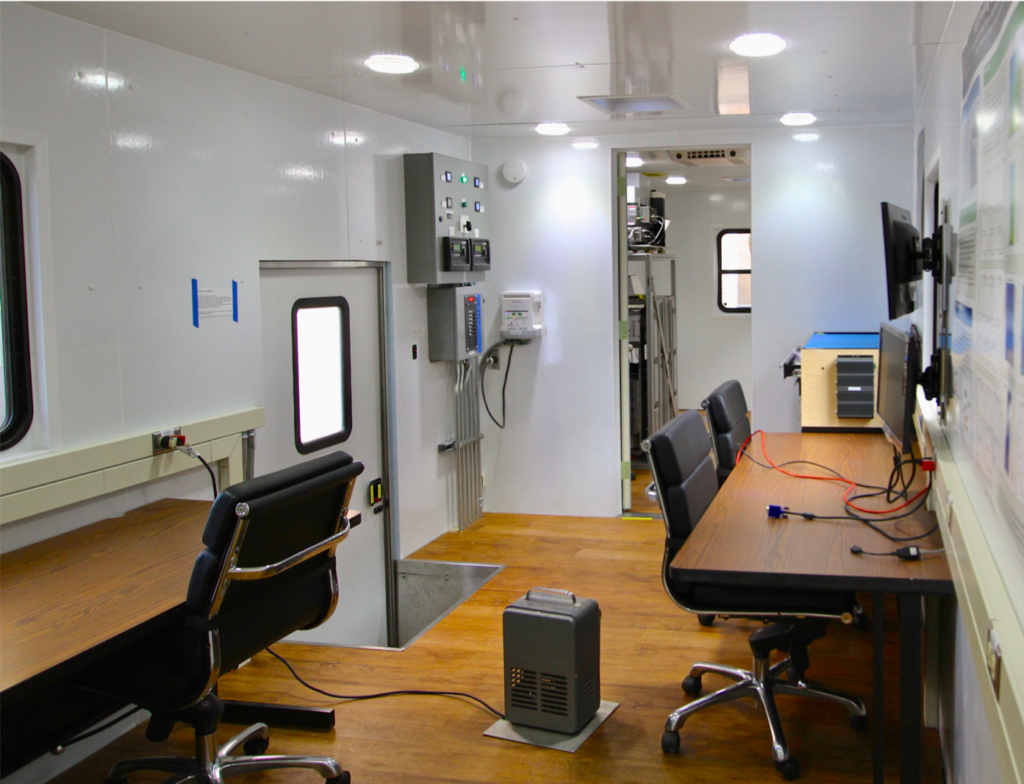
Specifications
The SPARC is a custom-designed trailer, towed by a Ford F-550 pickup truck equipped with a fifth wheel trailer hitch. The interior has two rooms: an instrument room for the core remote sensors, and an office workspace equipped with desks, toolboxes, multiple screens for monitoring the status of the instruments, and a small galley; a team of 4 researchers can work in a well-conditioned and quiet environment.
Internal wired ethernet connects the instruments, processing systems, on-board data archive, and workstations; Wi-Fi access is also available. An external wired or wireless internet connection enables regular data transfers and remote monitoring of all critical systems.
Electrical power can be provided either through direct connection to an external 125/250V power supply of up to 60-A, or through an on-board propane-powered generator. The onboard liquid propane (LP) tank capacity is sufficient to operate all SPARC instruments and systems for approximately 24 hours. Large external propane tanks can be rented to support continuous SPARC operations at remote locations for periods of months. A battery backup system can power the SPARC for approximately one hour.
The SPARC can transition from being in transit to full deployment in approximately 30 min with two personnel, which makes it suitable for temporary deployment in the path of transient phenomena such as severe weather. It is also capable of long-term stationary operations for indefinite periods of time to capture longer-lived or regularly occurring events. The trailer walls have added insulation to facilitate operations in both very hot and cold environments.
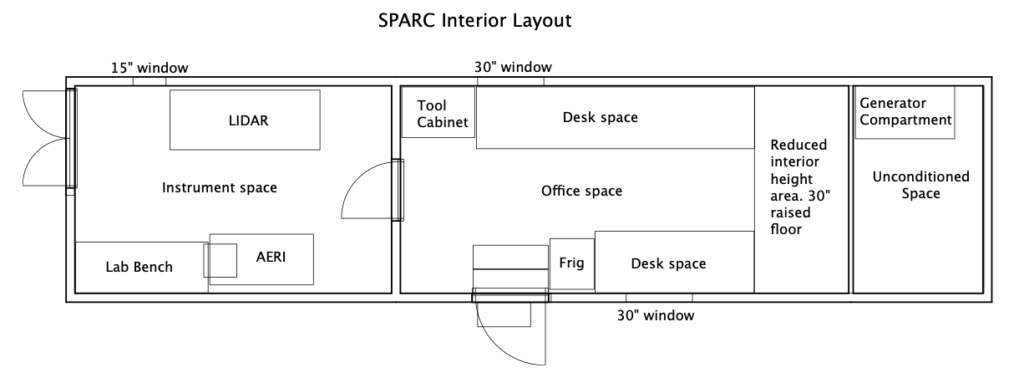
SPARClet
A sister enclosure option was developed, called the SPARClet, that provides additional deployment options for the HSRL, and in the future for the AERI. The SPARClet is a highly customized sea container, fully temperature controlled and power conditioned, requiring only a source of shore power for autonomous operation. It can be shipped by flatbed truck, ship or plane. It is particularly well suited for international deployments, marine deployments and other challenging environments.
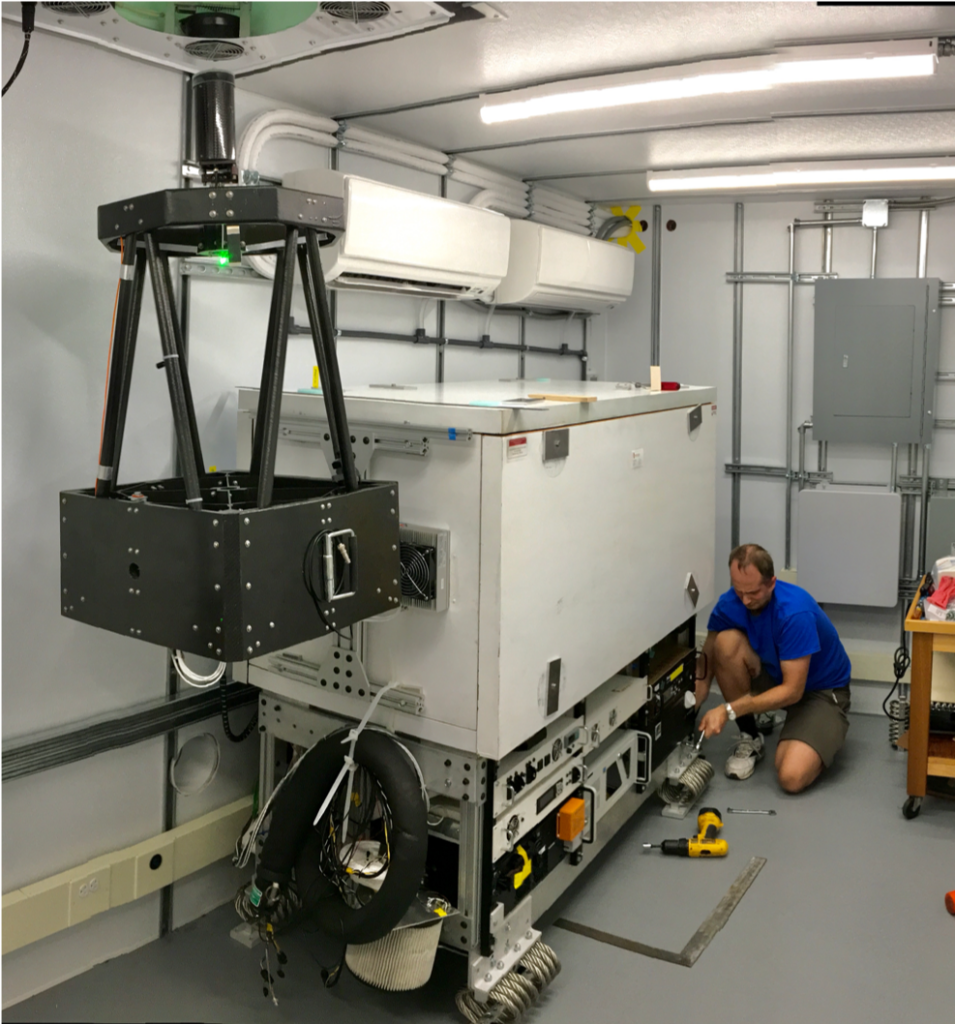
Heritage
The heritage of the SPARC is the AERIBAGO, a modified 1994 Winnebago designed to deploy multiple remote sensing and in situ instruments, that participated in over 30 field campaigns between 1998– 2013. As the facility was showing its age, SSEC decided to make a capital investment and use our extensive field experience to design and build a new upgraded mobile research laboratory with even greater functionality. The SPARC became operational in 2014; the SPARClet in 2018. The upgraded SSEC facilities have been successfully deployed in multiple field campaigns around the US and worldwide.
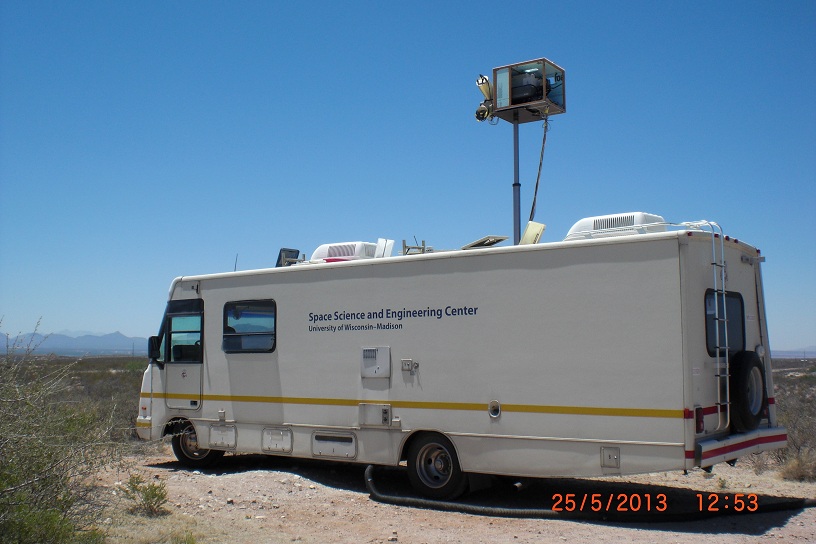
Science
The unique capability of the SPARC instruments to provide simultaneous thermodynamic and kinematic profiles in the lower troposphere along with detailed profiles of cloud and aerosol properties at high temporal and vertical resolution, allows the discernment of changes in atmospheric structure in response to forcings with unprecedented detail, not available with any other observing system. The SPARC is able to fill in the spatial and temporal gaps of existing operational observing networks, and add value through targeted deployments to locations where existing observations are sparse and knowledge of atmospheric profiles would have substantial benefit. The suite of instruments on board SPARC have demonstrated scientific advances in diverse fields such as mesoscale meteorology, tropospheric chemistry, cloud physics, land-atmosphere interactions, climatology, and energy balance studies.
